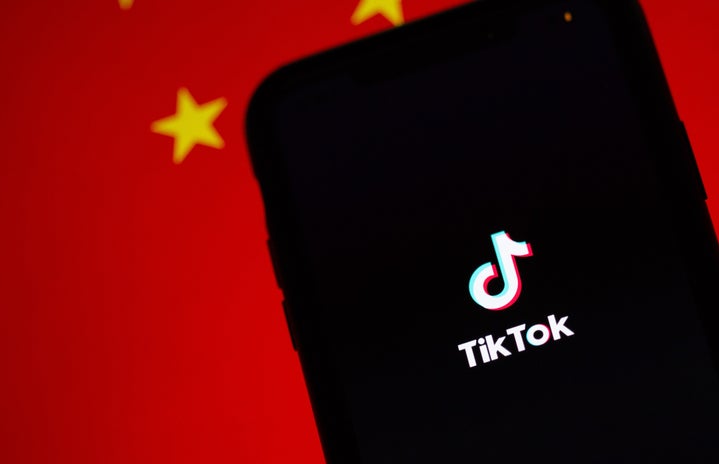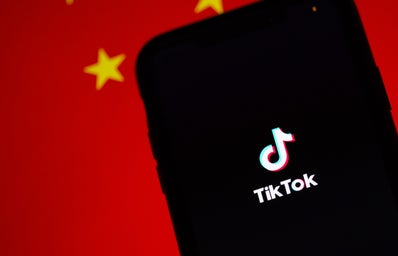Alix Earle.
The 22-year-old influencer rose to fame on TikTok for creating lifestyle content as a college-aged party girl at UMiami. Described by several media outlets as the new “it-girl”, she amassed 1.7 million in almost a month. From becoming famous for being a confident, pretty, young woman who has shaped the minds of TikTok users across the globe, to the lesson that no woman will ever be enough for a man (following the shocking breakup between her and her baseball player ex-boyfriend) we must ask ourselves: What have we learned from Alix Earle?
Charli D’amelio was our first Alix. A girl that gained popularity because she was pretty, talented, and made a name for herself by building upon her existing skills (dancing). She adapted what she was good at to work for a platform that would eventually grant her over 100 million followers, allow her to grow on additional platforms, be given countless sponsorships and television appearances, and pave the way for her and her family to film their reality television show.
Alix’s name grew in the past year when she broke it off with former New York Yankees player boyfriend, Tyler Wade, because he failed to post her. “We have been fighting for a bit. I just was not happy with the way I was feeling. He wouldn’t post me,” Earle said of their four-month relationship. She furthered her brand off of a “what would Alix do?” mantra and became the face of the single-girl era. Both Addison Rae and Riley Hubatka have also furthered their images off of their breakups with ex-Sway House leader, Bryce Hall. Breakups and drama seem to be a common denominator, but is that all that’s at play?
Girls like Alix, Charli, her sister Dixie, Addison Rae, Riley Hubatka, and more build platforms from being young, (occasionally) funny, talented, and (also occasionally) down to earth. But why do we grant such similar-looking and acting women such a strong platform, so often? Is it the drama? Is it their looks? Their skills? What is so significant about them?
TikTok elevates the platforms of women whose names go viral, who garner quick popularity, and who engage in public (and petty) drama for views. Pretty, white creators do well for themselves when TikTok plants the blue check next to their name because they deem them relevant enough.
Unlike Instagram or Twitter, TikTok does not have an application process to become verified, and instead gives out a verification status at its discretion, to whoever it wants. When Alix Earle grew in fame and followers, TikTok deemed her important enough to provide her with the blue check. But why are creators like Alix Earle and Charli D’amelio considered important enough when they earn their fame practically overnight, while TikTok turns a blind eye to content creators of color who produce videos that regularly perform well?
Users like Monet McMichael (@monetmcmichael, 2.3M followers), Aliyah (@aliyahsinterlude1, 2.2M followers), Nia (@wh0.nia, 5.2M followers), Erika (@erikatitus, 3.8M followers) and Kirsten (@pepperonimuffin, 8.6M followers) Titus, Niccoya (@niccoya, 2.6M followers), Jory (@alluringskull, 2.2M followers) and so many more creators of color are excluded from TikTok’s selection process of verification.
Many of these creators make videos that have a hint of Alix Earle’s confidence or charisma, but also offer personalized content that fits with their audience. Their ability to read and understand their audience is what allowed them to amass such a following, so why does TikTok reward voices that stir the pot instead of ones that receive consistent views? TikTok often withholds verification from creators, like Monet McMichael, that have countless partnerships with large brands (like MicMichael’s partnership with Amazon) and have gone above and beyond to prove that they’re deserving of the status. When talented creators diversify the app with their voices and create content that resembles that of a “Get Ready with Me” vlogger like Alix Earle, they’re often silenced instead of recognized.
In July of 2021, TikTok fell under fire for muting black creators amid the growth of the Black Lives Matter movement, censoring words that users placed in their bios in support of BLM like “black lives matter”, or “black voices” and “pro-black”. These words were flagged for being inappropriate content and users were asked to remove them from their bios. On the other hand, when users included “I am a neo-Nazi” or “supporting white supremacy” in their bios, the phrases were not flagged for inappropriate content nor were they asked to be removed.
Earlier, in June of 2021, Jewish TikTok creators shared their experiences of censorship on the app, as well. When Jewish creators spoke about Judaism or featured any symbols of their religion on the app, they were met with antisemitic comments or different forms of hate speech from viewers. The app itself, again, was met with backlash when Jewish users were banned from posting, with TikTok using the idea that they were violating community guidelines and citing “hateful behavior” as a reason for their suspension from posting.
Why is the monitoring process on TikTok targeting communities of color, and when it comes to the distribution of the blue check, why is TikTok withholding it from creators that are well-deserving of verification? As media outlets fall into a deeper world of accountability when it comes to monitoring what their users are saying/doing to prevent the outbreak of hate speech (as exemplified in the brash behaviors of Kanye West), how are social media platforms also holding themselves accountable to ensure that their creators are being treated fairly and being granted fair access to the platform, not simply because their name rose to fame overnight?
The problem isn’t content creators like Alix Earle; the problem is the social media outlets granting a platform to white content creators although creators of color that work equally as hard (if not harder) to maintain a following. There’s no reason for TikTok to be stingy with its blue check. There’s enough to go around.

